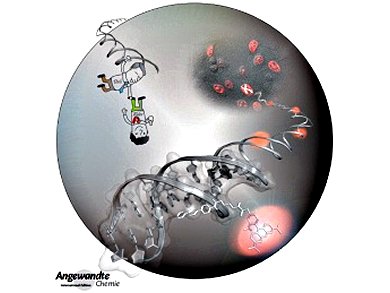In this issue, S. O. Krabbenborg and J. Huskens review the electrochemical generation of gradients. What benefits does this method offer with respect to the generation of dynamic solution and surface gradients, the integration of electronics, and compatibility with automation? In a Minireview, M. J. Krische et al. discuss catalytic enantioselective C–H functionalization of alcohols by redox-triggered carbonyl addition. The Highlight deals with thermoelectric tin selenide (H. Zhang and D. V. Talapin). In an Essay, K. C. Nicolaou inspires new drug development processes.
In the Communications section, U. Rieder and N. W. Luedtke use an inverse electron demand Diels–Alder reaction to enable time-resolved, multicolor labeling of DNA synthesis in individual cells (see picture). J. Šebestík and P. Bouř observed the paramagnetic Raman optical activity of nitrogen dioxide. R. Kinjo et al. report on the isolation of a bis(oxazol-2-ylidene)–phenylborylene adduct and its reactivity as a boron-centered nucleophile. P. J. Chirik et al. present photochemical reductive elimination as a route to a zirconocene complex with a strongly activated N2 ligand.
- Angewandte Chemie 35/2014: Inspiration and Automation,
Angew. Chem. Int. Ed. 2014, 35.


